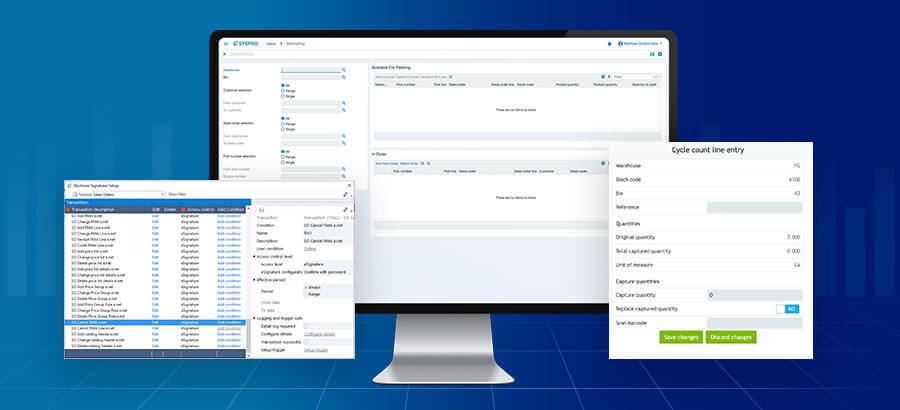Does digital transformation require radical re-thinking? For traditional companies, the prospect of a complete digital overhaul has left many businesses in a fight, flight or freeze mode. With barriers ranging from the costs associated with moving away from legacy systems through to the lack of skills to enable it, digital transformation has been a far-off dream for many.
That is of course until the pandemic struck, and organizations had to urgently integrate digital technologies to stay afloat. According to a recent SYSPRO study entitled The Inflection Point for the Factory of the Future, 47% of manufacturers and distributors were unable to function due to operational staff reliance on-premise. On top of that, 29% of those businesses felt that their business systems did not provide them with the availability and accessibility to manage the changes that the pandemic introduced. They realized that digital transformation was a necessity to enable collaboration, agility, and control and to ultimately survive.
The concept of digital transformation is of course not as simple as it may sound. Technology is ever-evolving, and companies need to stay on top of these changes. Companies also need to understand their current digital maturity level to understand what plans need to be in motion to transition to the next level.
The levels of digital maturity
If you Google ‘digital maturity levels’, you will see a multitude of classifications. Some speak of indifference, observer, challenger, and native classifications; while others refer to traditional, emerging, engaged, competitive, and maturing classifications as an example. No matter how you prefer to categorize it, some commonalities occur within each stage that can help you identify your organization’s level of digital maturity.
1. The Traditional Organization
The first level describes an ‘analog’ organization that still operates manually.
2. Proceeding with a Digital Roadmap
Within the next level, an organization is still within the early stages of their digital journey but do have a digital roadmap in place. Some processes are automated, and applications are likely to be hosted in the cloud.
3. Subscribing to a Digital Agenda
The next level describes an organization that understands the value of digitization and is actively pursuing a digital agenda. Core processes are automated, and they have embraced the cloud. These organizations are also exploring a future growth plan.
4. The Digital Penthouse
This is a digitally-driven organization with the aim of improving the customer experience. This organization is agile, with the ability to handle high volatility and peak demand requirements. Additionally, these organizations are always learning and embracing technologies as they emerge.
Assessing your digital maturity level with your ERP Provider
In consulting with your ERP provider, you should be prepared to answer a number of questions to identify your digital maturity level. With this knowledge, you can prioritize your immediate and mid-to-long term goals.
Questions could include:
- Do you incorporate digital solutions that allow for a high degree of remote control and automation?
- Are you still functioning with a high number of manual processes?
- How is your IT budget allocated, and how much is available to be allocated to cloud enablement?
- What do you want to achieve from transitioning into the cloud?
- Are the stakeholders prepared for the culture change in the organization that is required?
- Do you have plans in place to offer a new way of unlocking revenue streams?
By taking a step-by-step approach, the seemingly impossible becomes possible, these steps include:
- Ensuring that the organization is aligned with the “Why digital transformation.”
- Preparing the culture of the organization for change.
- Starting with smaller initiatives that build towards the larger objective.
- Mapping out the technology roadmap to achieve the required objectives.
- Seeking out partners and expertise to do more, faster.
- Gathering feedback and refining the momentum.
- Scaling and transforming the organization to provide a competitive advantage.
Rome wasn’t built in a day, but they started by laying the bricks
The good news is that digital convergence can happen gradually – at a more manageable pace. Similar to building a house, your foundational levels should be the support structure for future growth. It is about bringing in multiple technologies over an extended period to unlock value for competitive advantage. Ultimately, digital transformation needn’t be a mountain to climb, but rather an ongoing effort to move a company forward incrementally.






